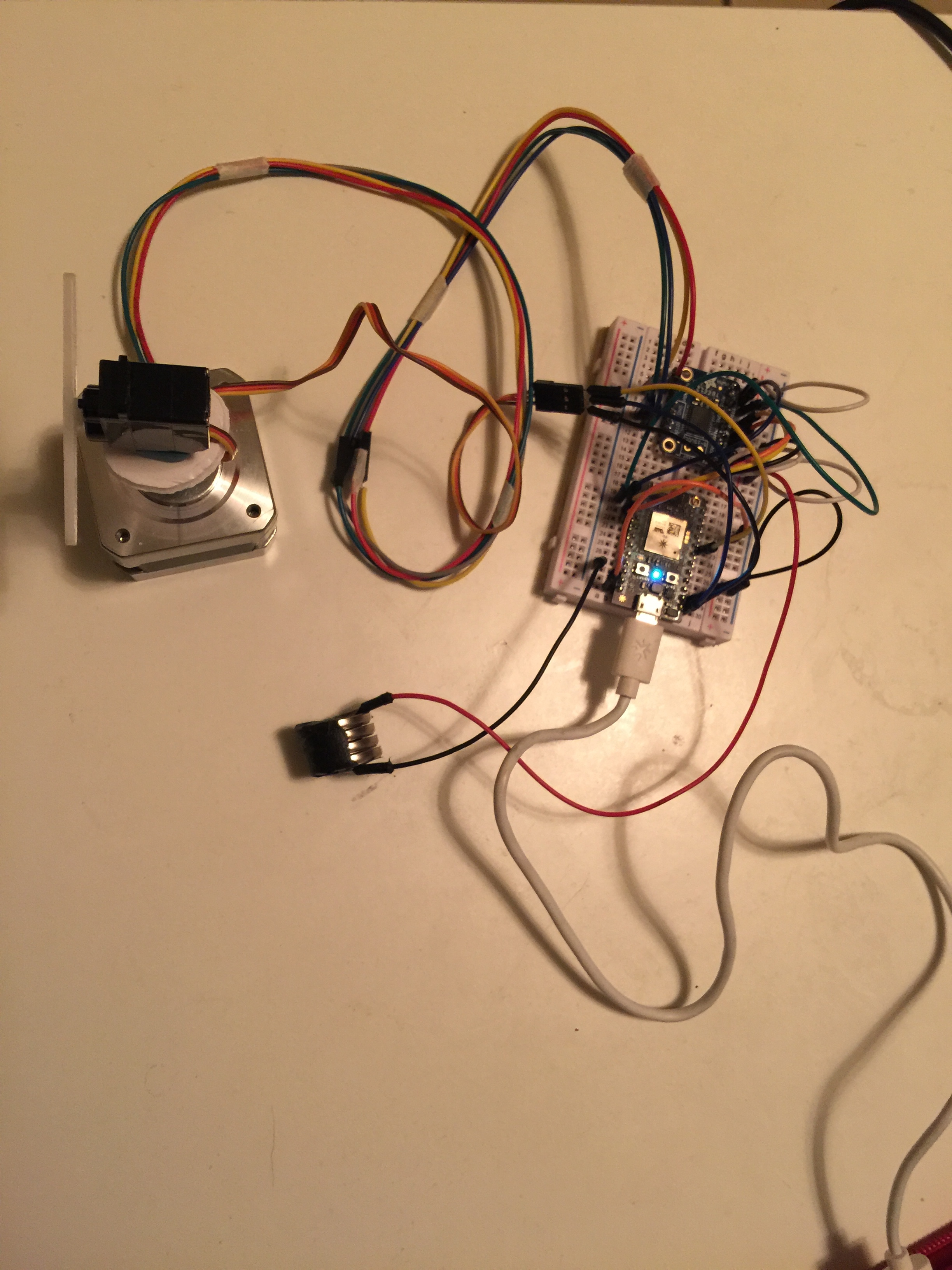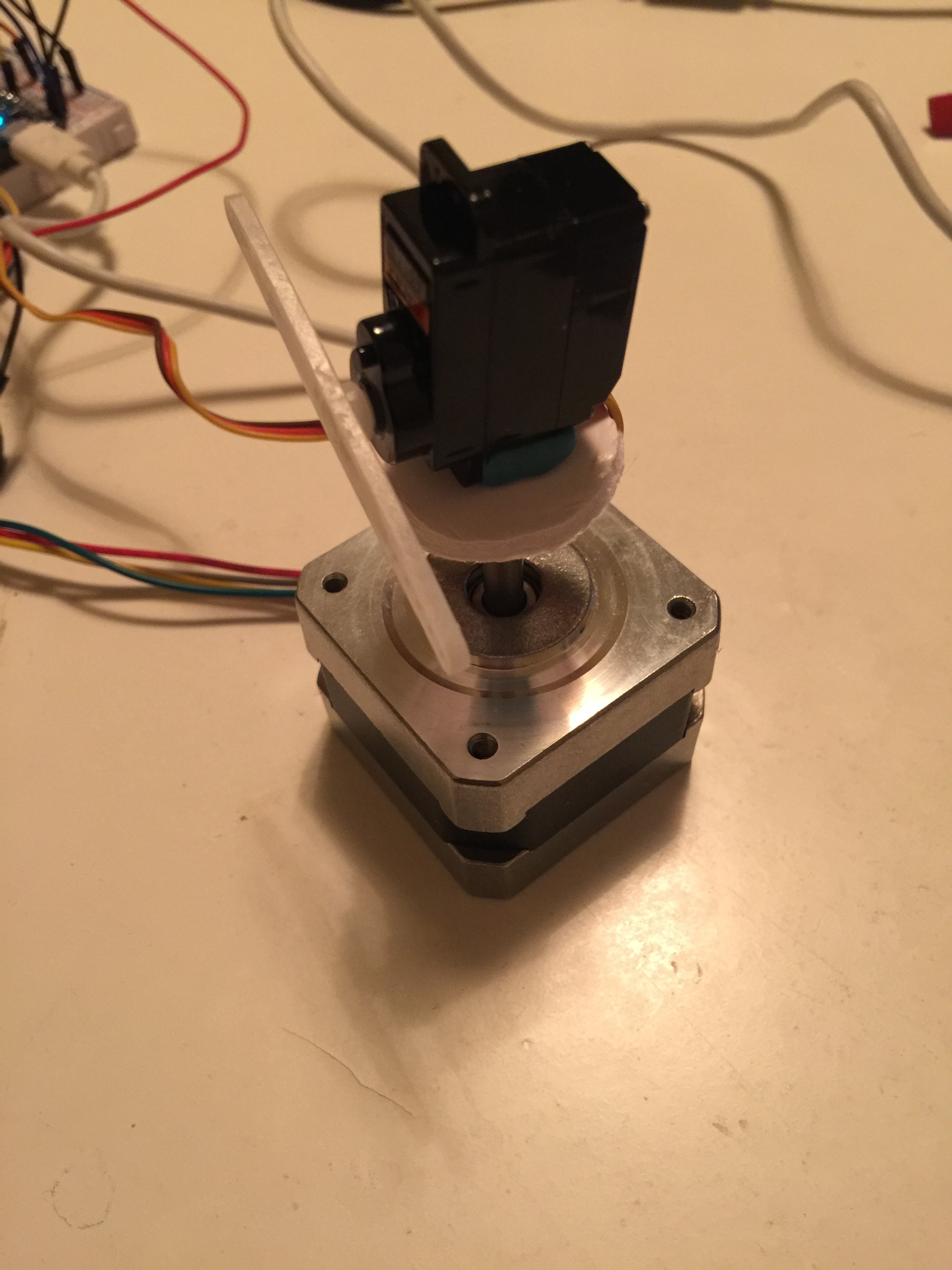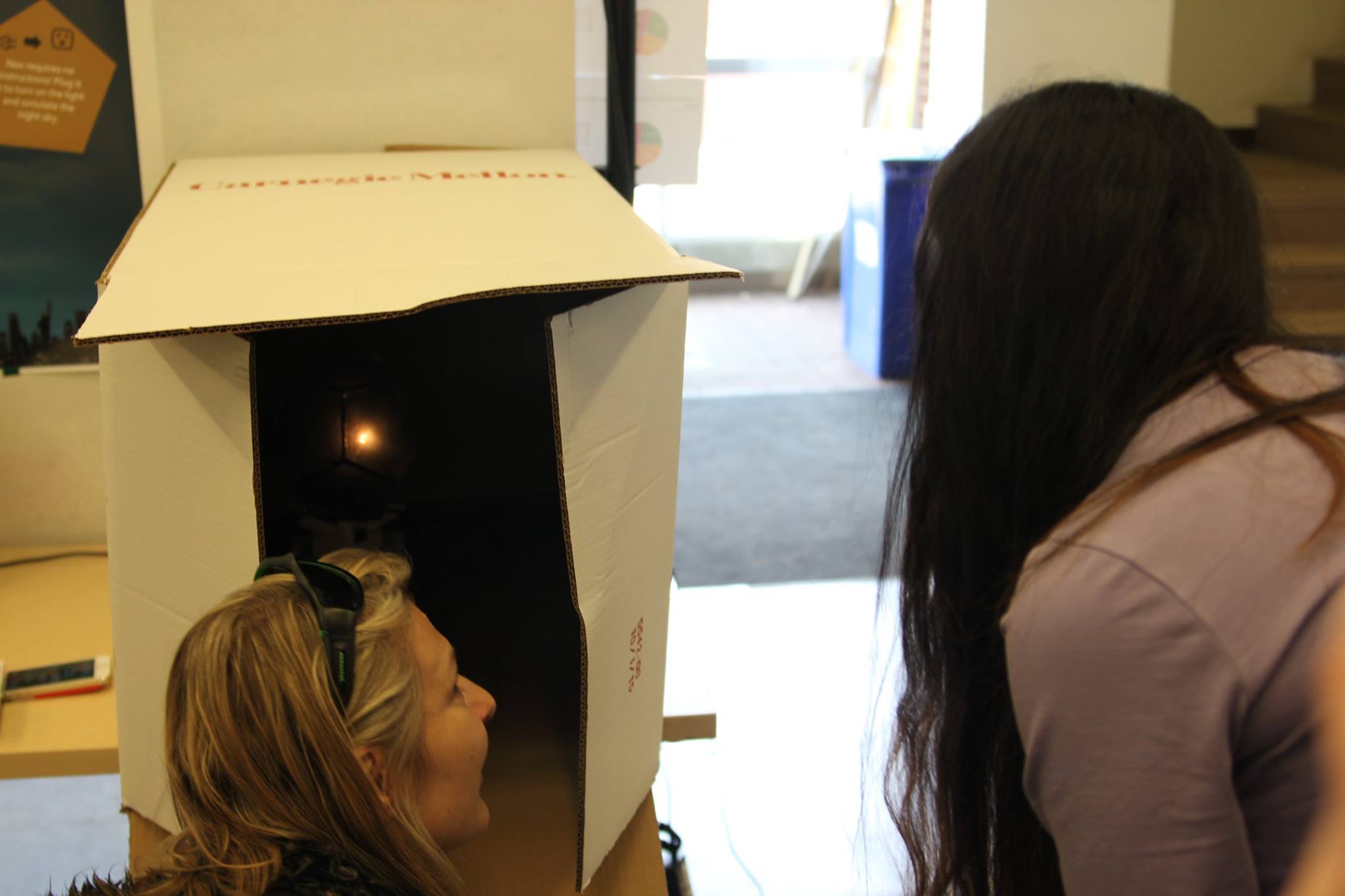Savanthi Murthy
USER EXPERIENCE RESEARCHER
How can an IoT device connect the average city dweller with the universe?
Nox is an ambient device that projects a night sky pattern on the walls and the ceiling. But that's not all it does! Nox also tracks in realtime, the position of the star Polaris, as would be seen at the user's location, as it moves across the night sky. Polaris appears as a red dot projected onto the ceiling. The night sky pattern aims to create the experience of being outdoors and looking at a spectacular night sky while being indoors. It also provides an authentic backdrop for Polaris.
Individual Project
The Process
How Does It Work?
Physical Components
Stepper motor + Servo motor move laser pointer.
The laser pointer points out Polaris.
Code
Nox was coded for the Particle Photon microcontroller.
The code extracts the user's current location in latitude and longitude coordinates and the star's location in terms of Right Ascension and Declination angles from APIs.
The required motion is calculated and Nox points out Polaris.
User Interaction
The user interaction for Nox was deliberately kept simple. Connecting to nature is something that comes naturally to humans. It would not make sense to use something digital and artificial, such as an app, or a website, when sometimes these are what keeps us away from spending more time outdoors.
Form
Parts of an existing product were used to create Nox. I purchased the Astro Star Laser Projector Cosmos Light Lamp and used the hexagonal structure as a shell for Nox. Future iterations of Nox will focus more on the form.
Outcome
Nox was demonstrated to IoT experts, experts from AlphaLab Gear and other students in a science fair format. Overall, Nox received positive feedback. Insights gained from this experience suggested some refinements:
A push button can be incorporated to change the celestial object that the pointer is pointing to. An OLED screen on the device can tell the user which star they're currently looking at.
A microcontroller-friendly compass can be used to identify the N-S direction so that the device can align itself.
The appearance of the product can be revamped.














